Body Positioning
What is body positioning and how does it help while riding?
Body positioning is moving your body in relation to the bike. It can help you navigate different terrain and maintain control of your bike. This involves standing on your pedals, not sitting on your seat, shifting your body from one side of the bike to the other, and in front of or behind the seat. It is important that when you have the chance to stand and use different body positions you keep your pedals at 9 and 3, compared to a clock, to maintain as much ground clearance as possible while navigating obstacles. Below you can read about the following positions: Ready, attack, sitting forwards and backwards of your seat, and shifting side to side on your bike.
Ready and Attack Position
The ready position is when your feet are on the pedals at 9 and 3, like a clock. This is displayed in figure 1 and 2. Your butt is off the seat, there is a slight bend in your knees and elbows, your back isn’t arched and your head is looking forward. The attack position is the same as the ready position except you have more bend in your elbows, your chest comes closer to the handlebar but not touching it. Remembering to keep your head up, and look forward.
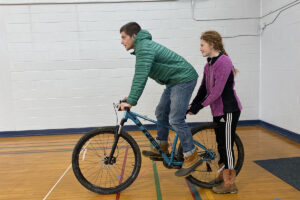
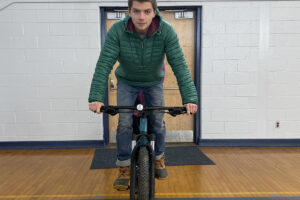
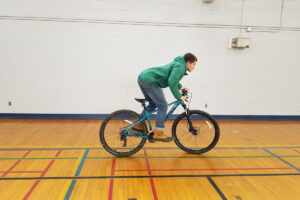
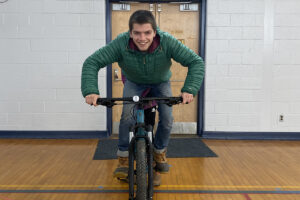
Sitting Forwards and Backwards On Your Bike
Sitting forward is when you stand up in your pedals and push your hips towards the handlebars so you can sometimes exert more force onto your pedals. How far forward you sit will depend on how much extra force you can exert onto your pedals. This is good when you want to get momentum to go uphill. The person below is sitting all the way forward on their bike, you do not have to sit this far forward. Sitting backward is when you take your but up off the seat, stick it out toward the back tire while extending your arms on the handlebars. Making sure not to dip your butt too low to the tire. Sitting backward is good when you are going downhill and need more control.
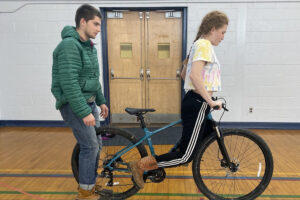
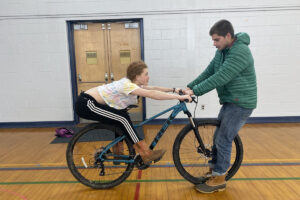
Moving side-to-side
Moving your body to the right is useful for when you are going around a left-hand turn. How you do this is you put most of your weight onto your right foot, moving the bike to the left and your body to the right. Making sure to keep your knees bent and extend your left arm. Because your body is on the right, the weight and how the bike is positioned makes the bike turn left. Moving your body to the left is useful for when you are going around a right-hand turn. How you do this is you put most of your weight on your left leg, making sure to keep your knees slightly bent. Then extend your right arm and move your body to the left and your bike to the right. Because your body is on the left, the weight and how the bike is positioned makes the bike turn right.
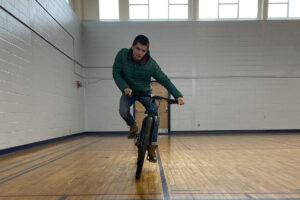
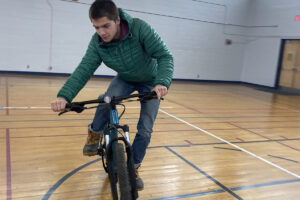
Playing Around with Body Positioning
- First Biker Challenge: How far forward can you go?
- Second Biker Challenge: How far backwards can you go?
- Third Biker Challenge: How far to the left can you go?
- Fourth Biker Challenge:How far to the right can you go?
